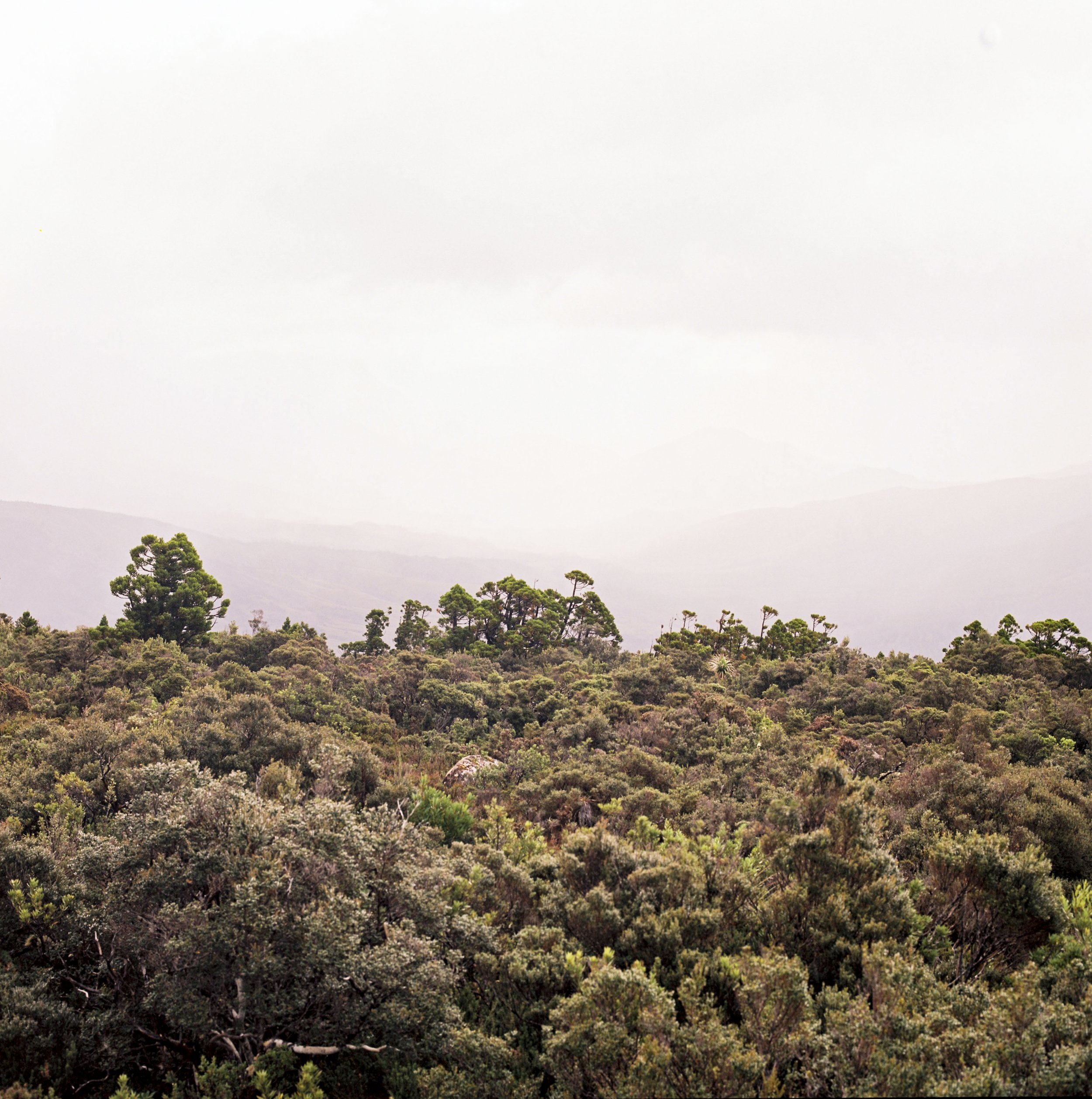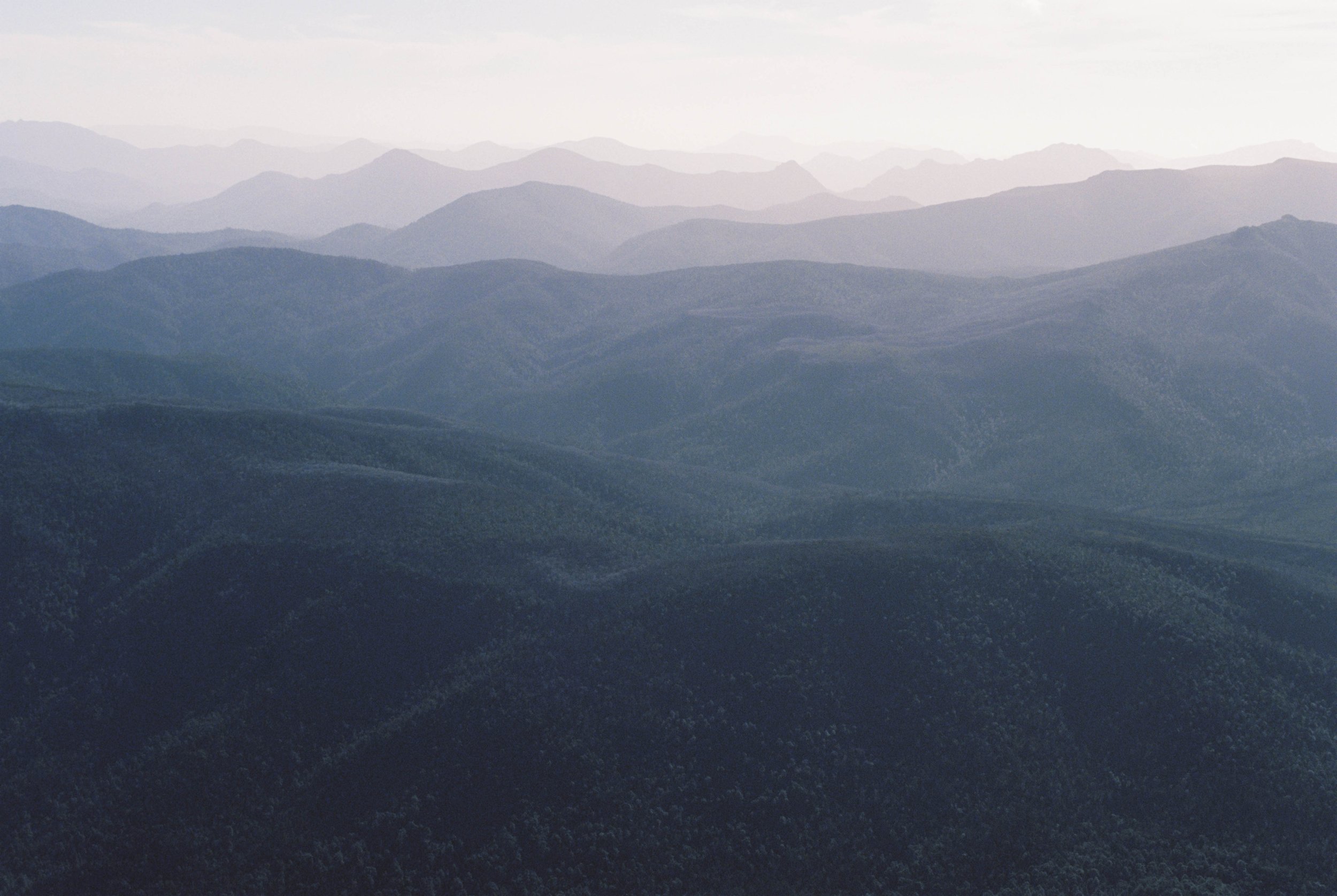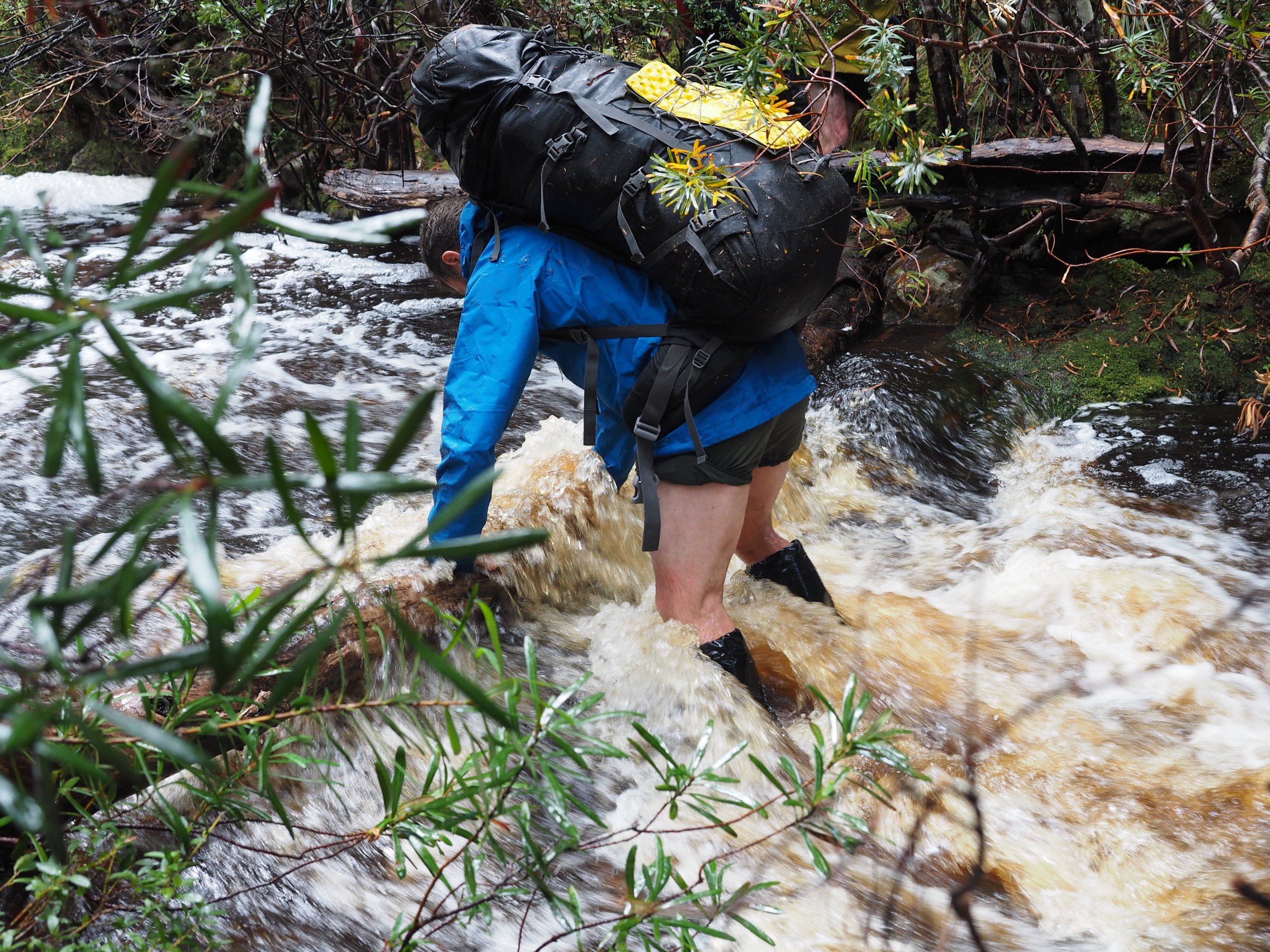“It’s true that landscape forms the mind.
If I stand here long enough I’ll learn how to sing.”
-Joy Harjo
The Melting Billy
“It’s true that landscape forms the mind.
If I stand here long enough I’ll learn how to sing.”
-Joy Harjo





If rain doesn’t fall for a long time, we call it a drought.
If rain falls for a long time, we call it a flood.
If there is not enough food, we are having a fast.
If there is too much food, we are having a feast.
If we are too far from the fire, we get cold,
If we are too close to the fire, we get burnt.
If we have enough air, we are breathing,
If we don’t have enough, we are drowning.
-A.S.

South

West

North

East
At the end of the trip, I tend to ask:
Was it worth carrying the camera?

Fire scars on top of scrubby ridgeline. 2022, Hasselblad 500C/M, 150mm Carl Zeiss Sonnar 150, Ektar 100.
Of late, I’ve been carrying a medium format film camera on some of my trips. It’s a Swedish camera, made in 1980, a certain Hasselblad 500C/M. It takes very nice photos.
It’s more than 40 years old, and operates impeccably. It has no electronic components, so there is no battery to charge up, or replace. There are twelve shots on a 120mm wide roll of negative film. I tend to shoot one roll of film per trip.
The total weight of the camera kit, including tripod is about 4kgs. So when I head into the hills, and I’m climbing some steep hill with a big pack on, sometimes I wonder about my choice of equipment. Is it really worth carrying all that weight, for 12 shots?
Well, I tend to say to myself that if I take a single good shot, then it was worth carrying the kit. One good shot is all I expect from a trip.

King Billy Pines on scrubby ridgeline. 2022, Hasselblad 500C/M, Carl Zeiss Planar 80, Ektar 100.
It doesn’t always happen, but every now and then, it all lines up and I catch the moment in time.

Herb field, tarns, view toward the crooked spire. 2022, Hasselblad 500 C/M, Carl Zeiss Sonnar 150, Ektar 100.
So, was it worth the gambit?
“I must not fear. Fear is the mind-killer. Fear is the little death that brings total obliteration. I will face my fear. I will permit it to pass over and through me. And when it has gone past I will turn the eye to see its path. Where the fear has gone there will be nothing. Only I will remain.”
-Frank Herbert, Dune

Behold, the South-West scrub!
I used to be scared of the scrub. I feared to enter it on my own, to leave the path and to immerse myself in it. Part of this was rational fear. What if I never find my way out of here? A legitimate concern. Or, will anyone find me if I fall over and hurt myself and I cannot move? (Probably not.)
And so I worked on the steady step. The step that never falters and never falls, it simply keeps going in the correct direction with steady determination. Eventually, the steady step always arrives to its destination. Although the destination is not always what one expected at the outset.

Fagus, above sub-alpine tarn.
The scrub appears to be our adversary. It makes walking difficult, it blocks our way and it requires a lot of effort. It can be painful, exhausting and frustrating to make way, when there are millions of woody limbs sprawled out in all directions, preventing easy progress. But if we spend enough time in scrub, the battle to make progress becomes a dance, one we get accustomed to, and one whose rule we slowly but surely learn.
I would define scrub as low, dense vegetation. Sometimes it might only be waist height, other times, it could be several meters tall. The floor of a forest may be ‘scrubby’, but that’s not really what I would call scrub.
Some of the thickest scrub in Tassie occurs above the forests, in the sub-alpine regions. When the fagus shows up, the myrtle beech trees become dwarfed, and scoparia appears, we know we have reached the dreaded zone. Between the luscious forests and the scoured alpine plateaus, the sub-alpine band awaits with deviousness.

800-1100m in elevation is the Tasmanian ‘death-zone’.
As a friend of mine recently pointed out, ‘The thing about this scrub is that it doesn’t really bend and it doesn’t really break.’ Therefore, progress is rather difficult. In order to get through, one must contort one’s body, and wriggle when stuck. Brute force is pretty much useless as a long term survival strategy. It mainly just wears a person out. Although sometimes, it is required. Especially through bauerea. But steady progress in scrub can only be made by acting like a quoll or a wombat. We must become either very nimble, agile and flexible, or we must get low down to the ground, dig in our teeth, and make a tunnel.
The use of a machette would not only be disrespectful to these hardy sub alpine plants, it would also be mostly useless. More energy would be expended in hacking through thick woody limbs than the amount of effort required to pass through, perhaps snap a few branches by accident and leave a barely noticeable line of weakness.

The best thing about scrub is that at some point, we get out of it.
Bushwalkers tend to funnel into natural bottlenecks on popular walking routes, creating these lines of weakness in the scrub, for subsequent parties to follow. The sad part is, eventually most of these lines of weakness become well worn pads, and some of those pads become well trafficked walkways that offer no resemblance to the original experience. Safe passage becomes matter of fact when there is a clear cut track.
Safe passage through scrub is never guaranteed. Skewered eye balls, broken ribs, heat exhaustion, dehydration, are all very real risks when one spends extended periods of time in the scrub. Progress is painstakingly slow, in some places as little as 1-2km a day, and that’s only through severe effort.
Let the scrub be the scrub. Don’t try to thin it out, order it, tame it, cut it or get rid of it.
Take it or leave it. Just don’t bash it.

“Just because our efforts are futile, it doesn’t mean they are meaningless.” -A.S.

A sinkhole and a distant ridgeline. 2020, Hasselblad 500C/M, Carl Zeiss Planar 70mm. Ektar 100.
A double exposure happens when the film inside a camera gets exposed to light on two separate occasions, creating two overlapping images on the same piece of film.
In my experience, most of my double exposures have occurred on my Hasselblad 500C/M, and none of them were intended. Since it’s a modular camera, it is possible to wind the shutter up while the film canister is detached. Therefore, it is possible to take a photograph without forwarding the film. Since both photographs are moulded together, it means we didn’t capture the single subject we intended each time. It’s easy to be disappointed, and to feel that both photographs were taken in futility.

King Billy forest and glacial lake. Hasselblad 500C/M, Carl Zeiss Planar 70mm.
But double exposures have their own value and not only because they can help us learn how to use our camera properly.
The result of a double exposure can be a much more interesting image than what we originally intended.

Van on Bruny, tree trunk. Hasselblad 500C/M, Carl Zeiss Planar 70mm.
Stand on a mountain
Breathe in as the wild winds blow
Dissolve your shadow.

Curled pandanni leaves
That withstood a thousand storms
Rustle in the wind.

Relinquish the Earth,
Free her from your desire
She will nourish you.

The great mystery
Time, an elastic string
What to do with it?

Old man to the wind
If forest is a city
Mountain is a shrine.


Which way will you go?
Right is wrong and wrong is right
Just follow your heart.

Become lost, then found
It’s coldest just before dawn,
Then the sun rises.

Wind sways through the trees
Dances past the trunks with ease
Rustles fallen leaves.

“It's a dangerous business, Frodo, going out your door. You step onto the road, and if you don't keep your feet, there's no knowing where you might be swept off to.”
-Bilbo Baggins from The Lord of the Rings by J.R.R. Tolkiens.

Not exactly a plantation.
There are certain places where we will only ever be visitors.
Deep in the temperate rainforests of Tasmania, it is moist, gloomy and generally cool. The soil smells of decomposing organic matter, and the ground is coated in moss and lichen. This is the prehistoric world of plants; and animal life is rare. Occasionally, a bird will call, but mostly there is silence, except for the whispering leaves in the wind. Warm blooded creatures tend to hang out somewhere else.

Handsome fungi.
This is the world of plants and fungi. When the plants die, when the trees fall down, the intricate network of fungi within the soil go to work, break down the timber, and make these nutrients available for other trees and plants to take up again. And when these fungi are ready to reproduce, we see the mushrooms pop up. But these are only a small part of a much larger organism hidden beneath the ground. The fine filaments of the fungi, or mycelium networks are so numerous that there can be kilometres of these filaments beneath a single footstep.

Two frozen ents, captured in time.
The ents in Tolkiens’ world were the tree protectors, the guardians. They were quite like trees themselves, except they could move. They would talk in really long sentences, because they have seen a lot and they had plenty of time.
I feel that we need more ents in our current time. We need beings who move slow and talk slow, and look out for the trees’ well being. We need elves too, the companions to the human race, except fairer, wiser and with eternal lives. Creatures whose wisdom exceeds ours, and creatures that we could look to, in order to help our own disheveled lives.
Where else would the elves live, but here, among the oldest trees? I haven’t found them yet, but this doesn’t mean that I will stop looking.
A.S. 10/3/22, Lenah Valley.

Fractals in the rainforest.
“If we can build a dam, we can also pull it down.” -Andy Szollosi

This image consists of two photographs. One was taken by Lindsay Hope in 1972, as Lake Pedder was about to be flooded, and the other one in 2021 by Andy Szollosi. The two images have the same composition, and are superimposed to create a single image, showing the shoreline of the original Lake Pedder, with its quartzite beach, but also the shoreline of the current impoundment. This edit was created by Andy Szollosi, with some valuable help from Matt Jones.
Media Release
Andy Szollosi and Pat Kirkby are set to ride their bikes from Hobart to Canberra in March-April 2022, to take a message from the home of the Restore Pedder movement to Parliment House. They are going to call on all politicians and political parties to commit to the restoration of Lake Pedder in the lead up to this year's Federal Election.

"The UN has called for this decade to be one of ecological restoration. What better way for Tasmanians to partake in this than to restore the beating heart of the Southwest?” –Andy Szollosi said.
"I’m pedaling for Pedder because I believe the restoration of this iconic wilderness area could show the world that we can go beyond just trying to slow the rate of ecosystem degradation. The restoration of Lake Pedder could be a globally iconic project that would provide hope for humanity, in this age of global environmental collapse." -Pat Kirkby said.
Pat and Andy will ride their pushbikes self sufficiently, without support, across Australia's tallest mountains, The Great Dividing Range. Along the way they hope to raise awareness and funds for the Restore Pedder movement. It's a journey that they expect will take them four weeks to complete.
People who wish to donate to their cause can do so through Pat and Andy’s Gofundme page.

Adventure begins when things don’t go to plan.

Correct creek crossing technique, as demonstrated by the inimitable Stu Bowling.
The first principle of the ‘leave no trace’ code is to ‘plan ahead and prepare’. There are multitudes of good reasons for this. Planning minimizes the likelihood of us coming undone in the bush. Having a plan means we will have enough food to eat, enough water to drink, and ideally end up where we intend to go. If we can boil our billy and have a cup of tea, as per the plan, that is great. However, none of my most memorable trips ended up going exactly to plan. Sometimes, the billy breaks, and hot water goes everywhere.
Now I don’t particularly enjoy hot water spilling unexpectedly from a heated vessel. Especially if I’m in its close proximity. But those times when the metaphorical billy did break and I was left with a troublesome situation, those times resulted in the greatest personal growth, or the building of the ever so elusive ‘character’.

‘Are you sure this is the way Andy?’ -Daniel Panek.
Building character is about surprising ourselves, and undertaking actions we didn’t think we were capable of doing. A lot of the time, we don’t know whether we can do something, and we simply tell ourselves that we can’t. ‘You’ll get hurt’. This voice is worth hearing out, but if we give in to it we won’t grow at all. We need to make mistakes in order to truly learn something. When we really screw up, this gives us the greatest opportunity to learn.
During a difficult trip, we tend to arrive to crux points, or natural bottlenecks, through which we must funnel through, in order to get out of the bottle and reach our destination. It can be dictated by the landscape, by the weather, by our own skill, preparation or equipment list. When we arrive to a bottleneck, the available options to us narrow down. Life becomes very simple, but rather difficult.
Arriving to a natural bottleneck, or a ‘crux’ of our trip could mean we have run out of food many days from the end of our trip, or that the sole of our boots have fallen off, or that we are unable to arrive to a decision with our adventure buddy about something important. It might mean we have become lost, we don’t have enough water, or that we are injured, and unable to move without pain. Having to funnel through a bottleneck might mean having to cross a river, or going across a high pass in a mountain range, or it might mean wriggling our way through a particularly dense thicket of vegetation.

The west coast rocks are not kind to rubber and leather.
There does not exist a definitive guide on how to deal with a crux situation. If someone claims to have written one I wouldn’t trust it. Every situation is different, and hides a subtly different solution.
In trying to find a solution, what will help us is if we are able to focus our awareness on the problem. But there is more to solving a problem than simply paying attention. We must listen with our entire being and react to the challenges presented to us with calculated precision and determination. And sometimes, a bit of brute force and stamina might help as well.
Generally, we are given an opportunity to extract ourselves out of a pickle before we turn to vinegar in our metaphorical bottle. If we continue making bad decisions that are based on our lack of paying attention to our environment, and the dynamic nature of its change, then we will continue to remain in the pickling jar. To find our way out of a tricky situation, concentration is required. What we need is an application of our attention to come up with a creative solution.
A crux sequence will present us with a problem which we don’t really know how to solve. But we have to solve it anyway. We may not be ready, we may not even be willing, but a true adventure will force us to solve a problem we didn’t know we were capable of solving.
The realisation that we are capable of much more than what we thought was possible is the sign that not everything went to plan. When the billy breaks, we have an opportunity to become much more than we were.
My personal rule is that if I can make a cup of tea out in the bush, then everything is fine. Making a cup of tea implies access to water, shelter, and some way of keeping warm. So if I can boil a billy, everything will be just fine.
But I would be truly disappointed if every trip I took included a hot cup of tea at the end of each day. Sometimes the billy needs to break, and hot water must go everywhere.

Pretty sure the wicked witch of the west lives out here somewhere.
PS: I renamed my blog this week to ‘The Boiling Billy’. There was a facebook page called ‘Mountains of Tasmania’ so I wanted to avoid confusion in the long term. If you haven’t signed up to these weekly posts to be sent direct to your inbox, here is your chance!